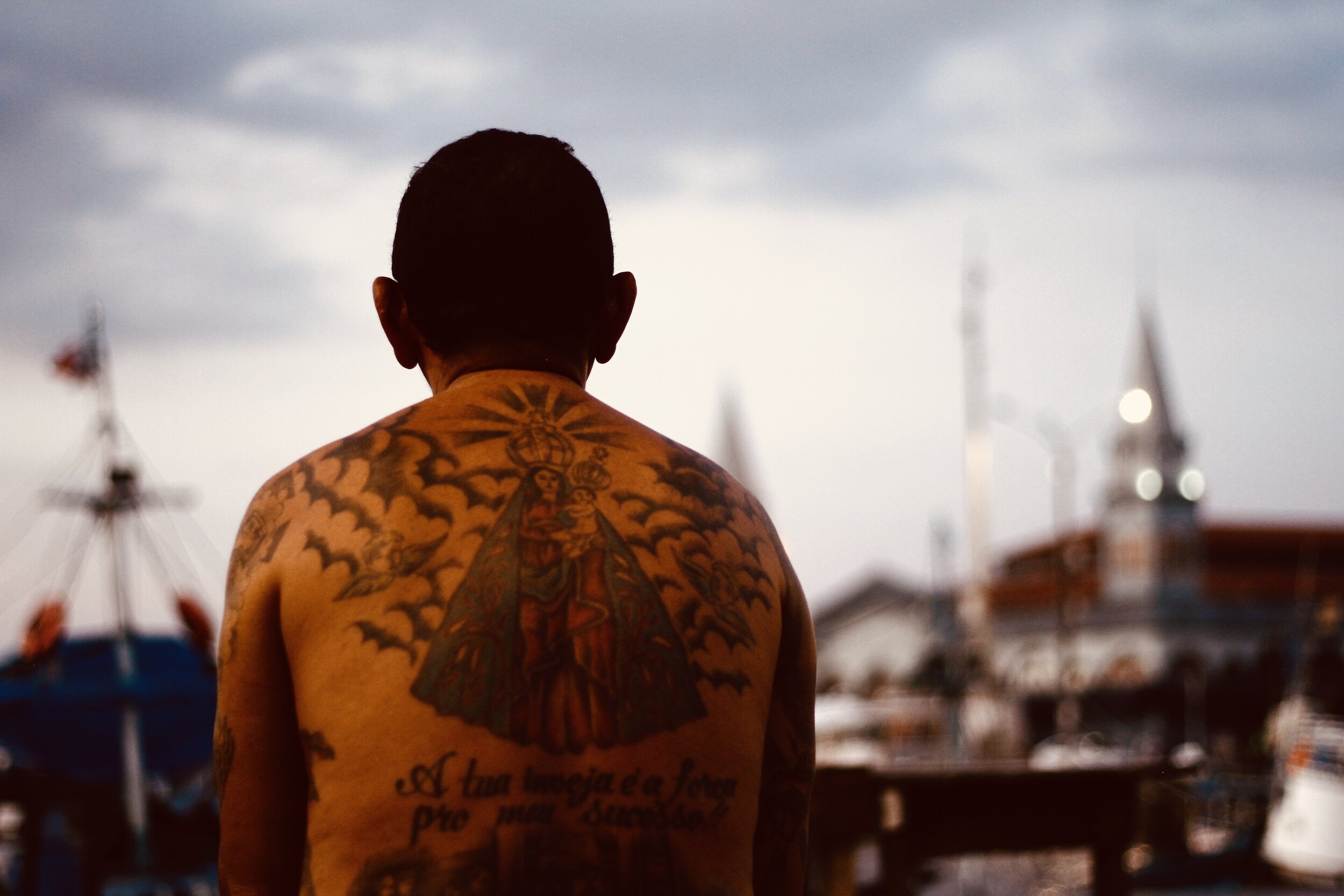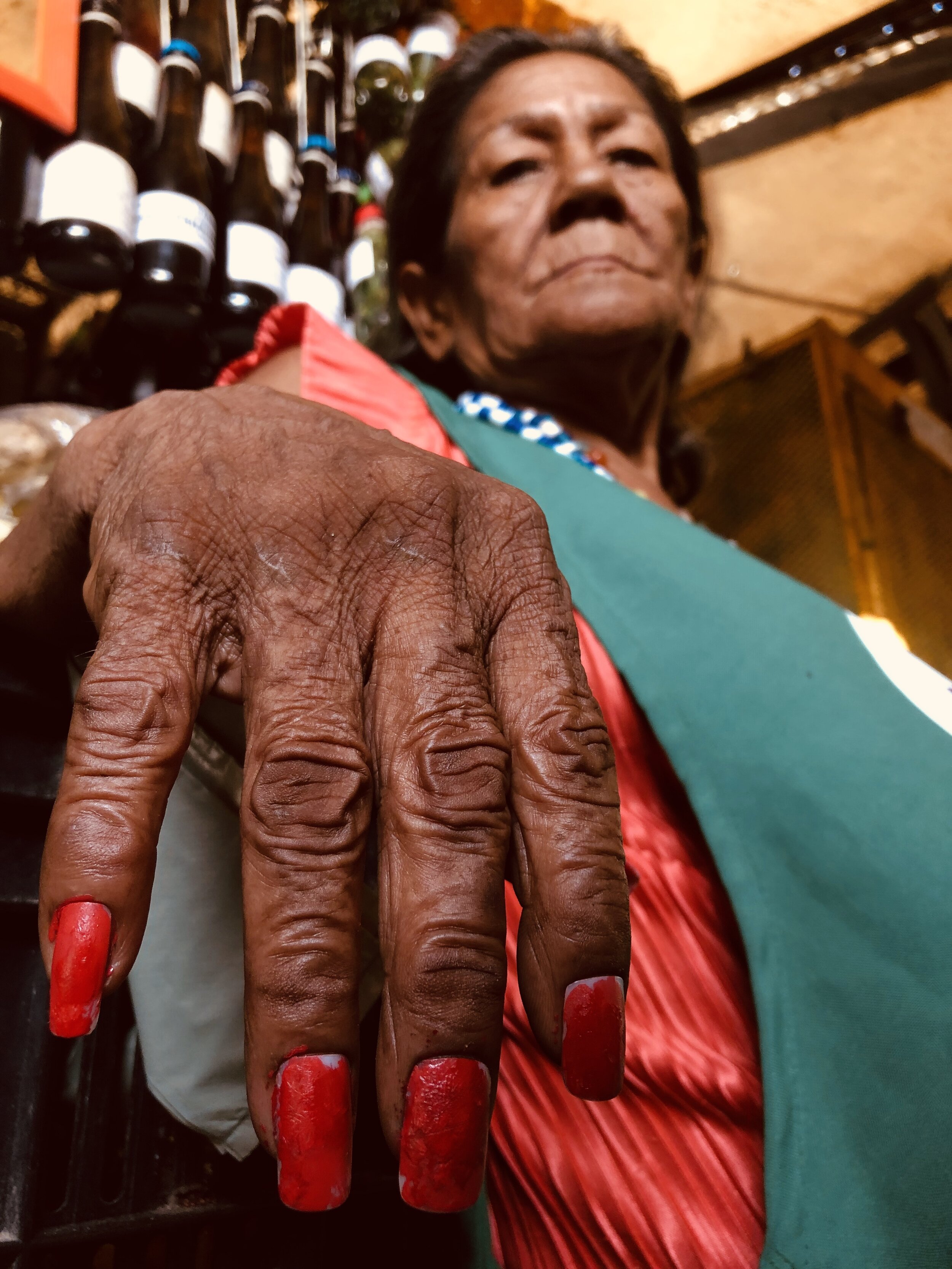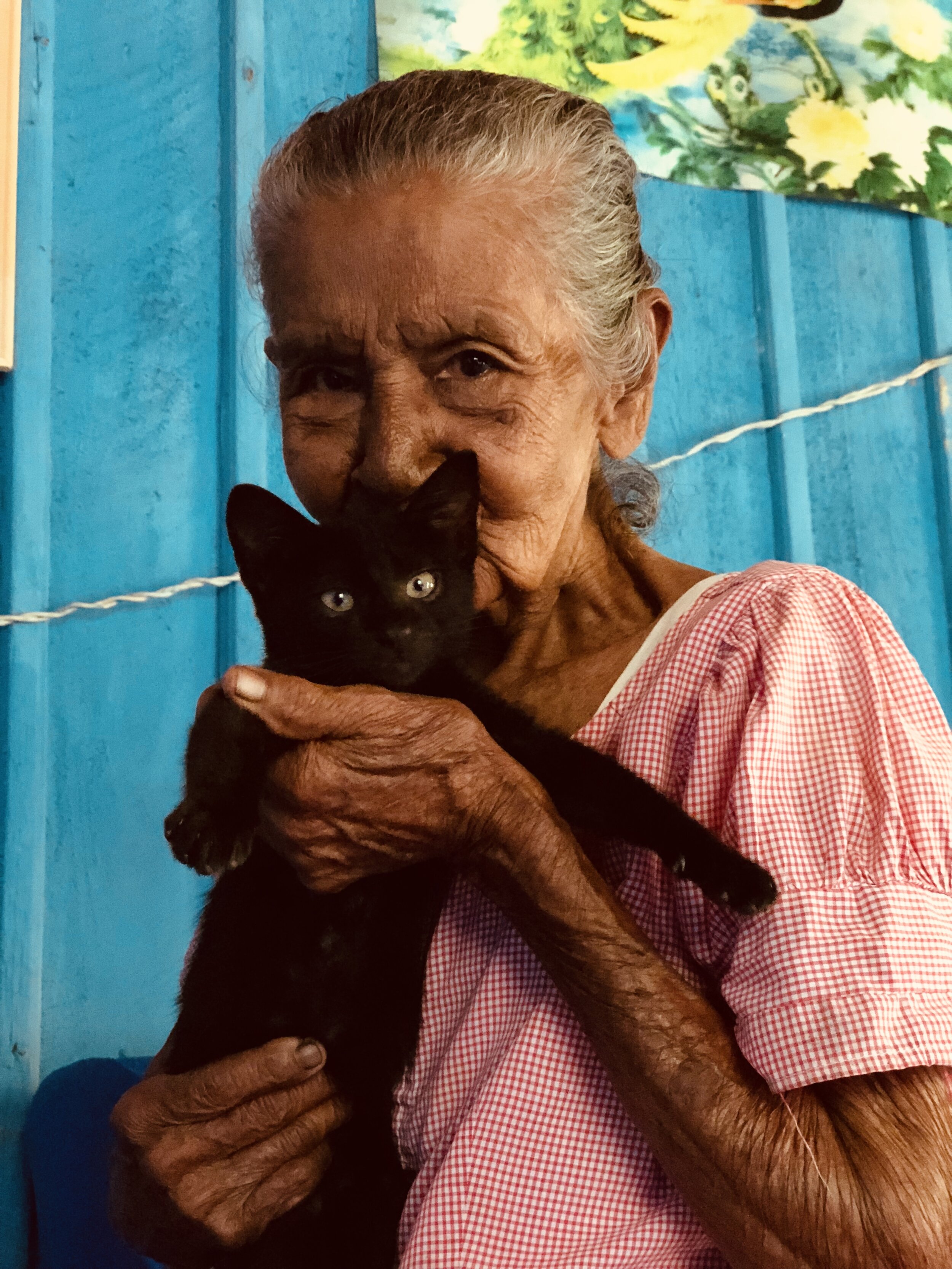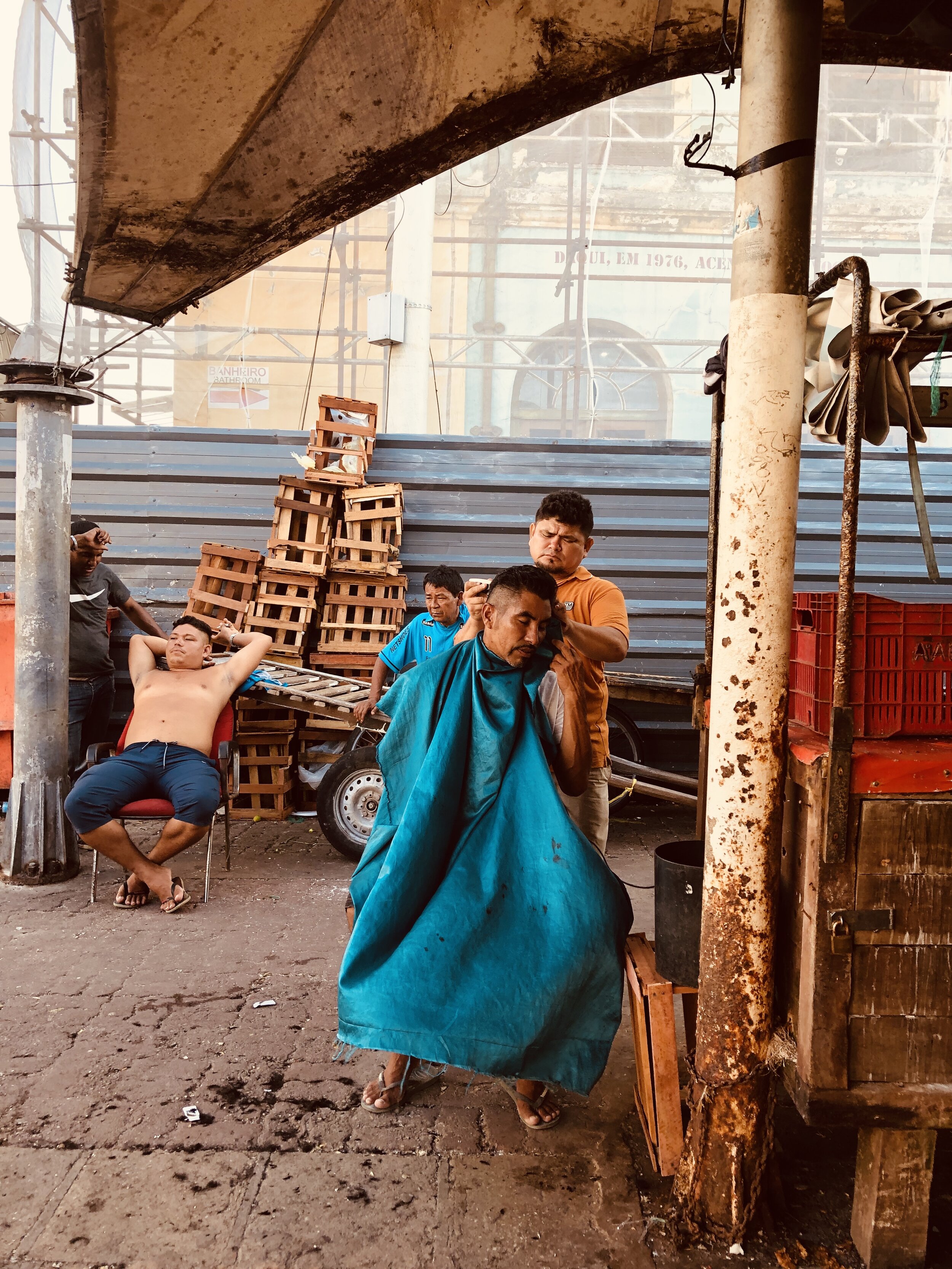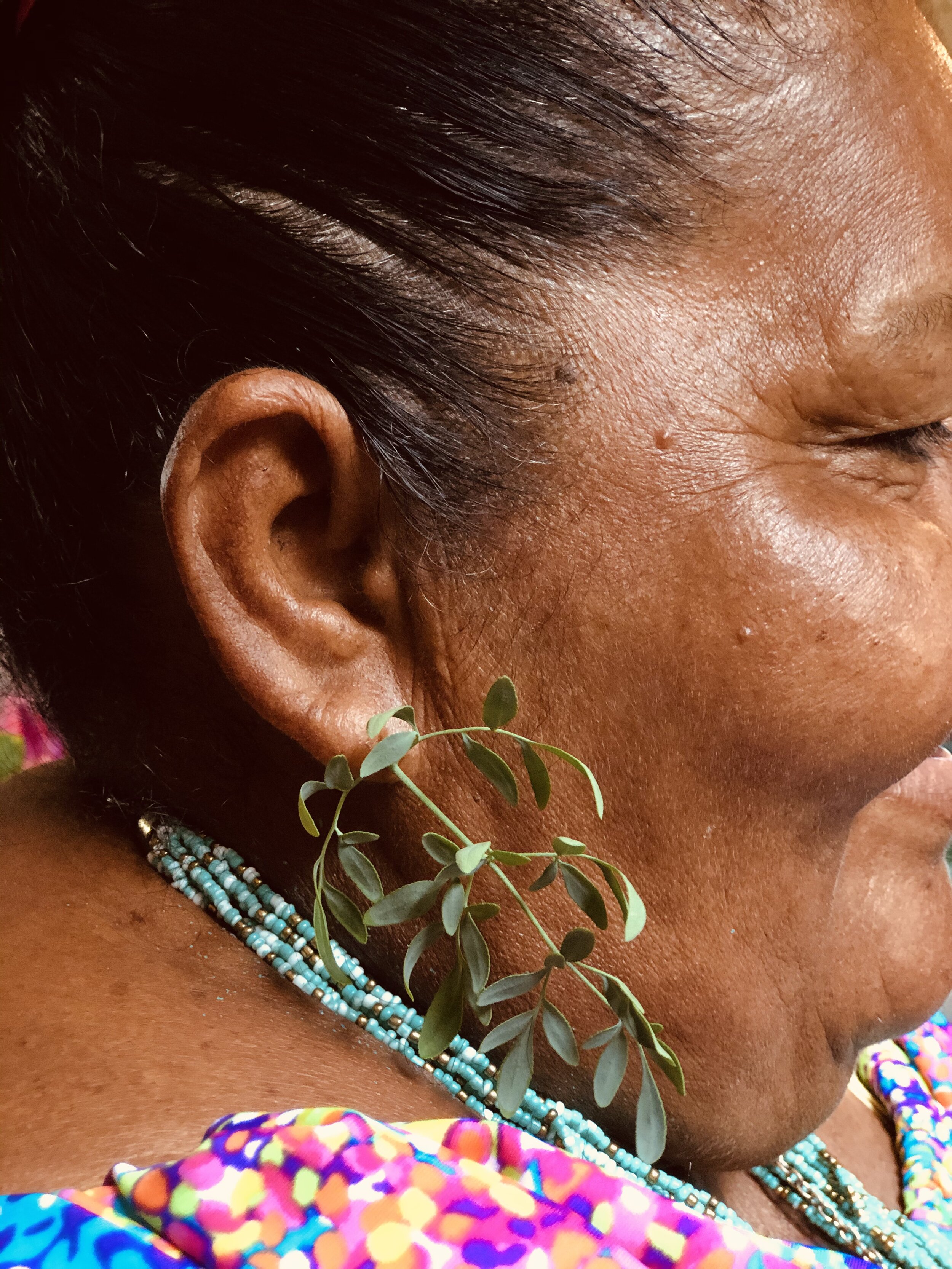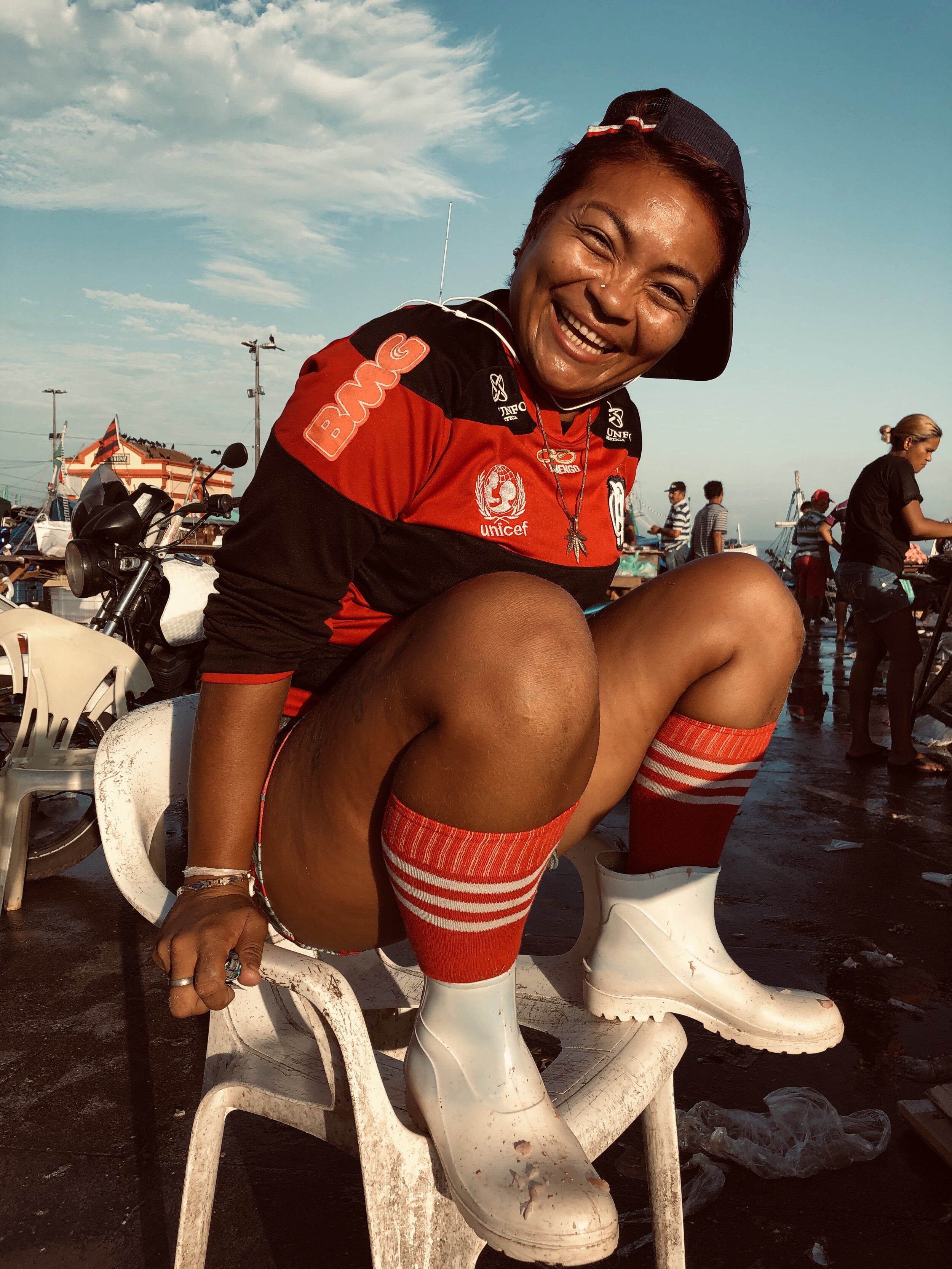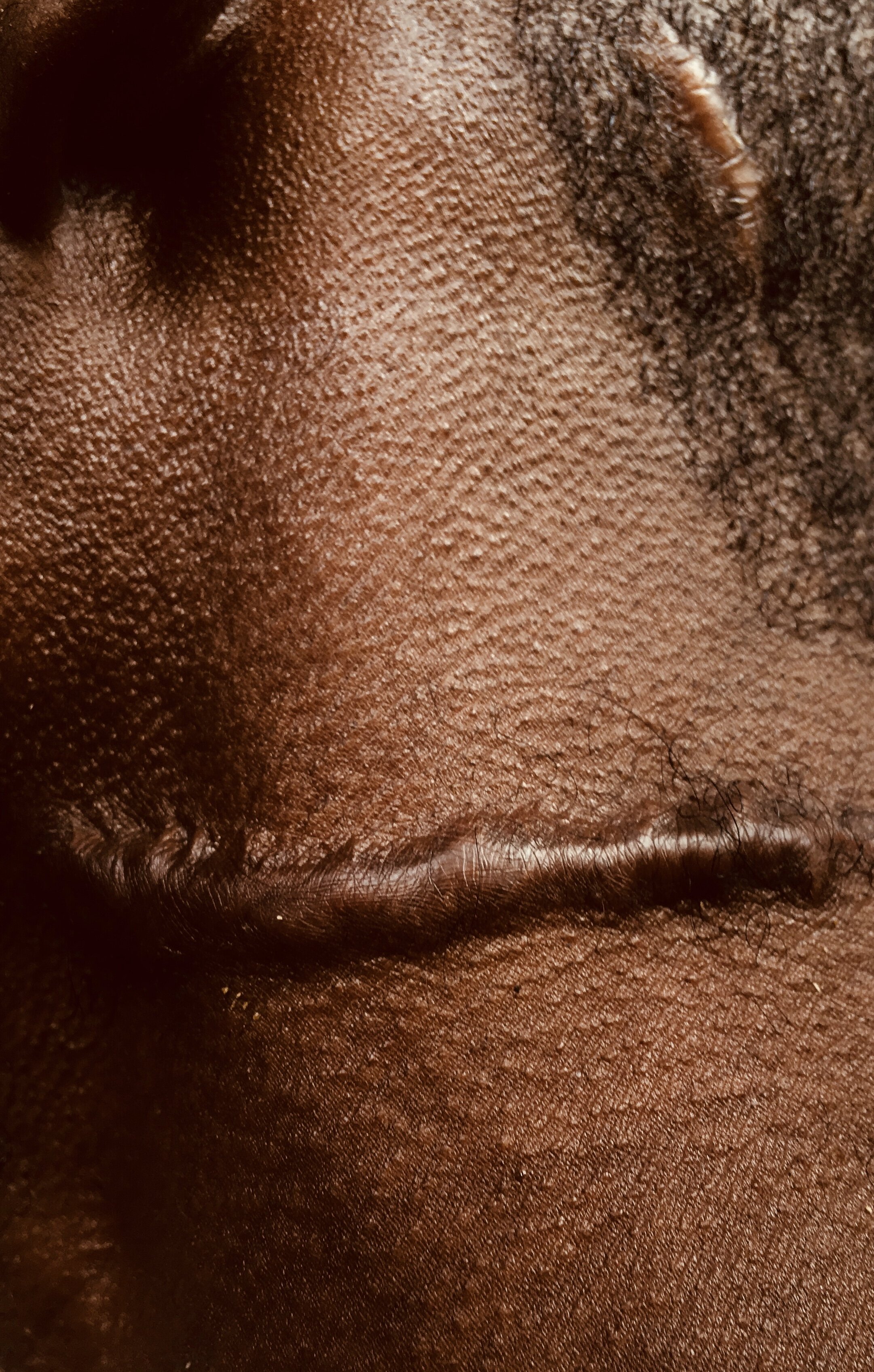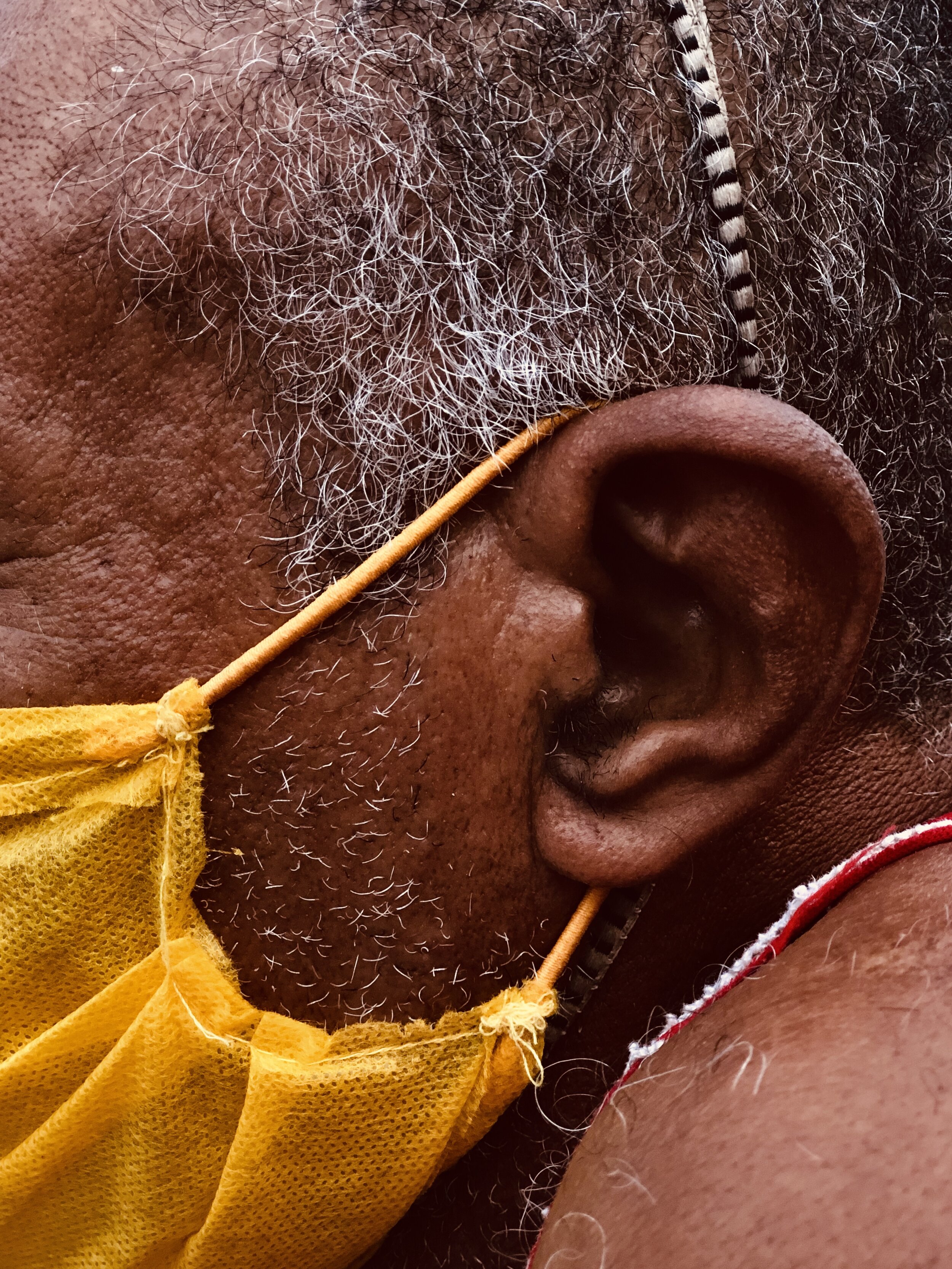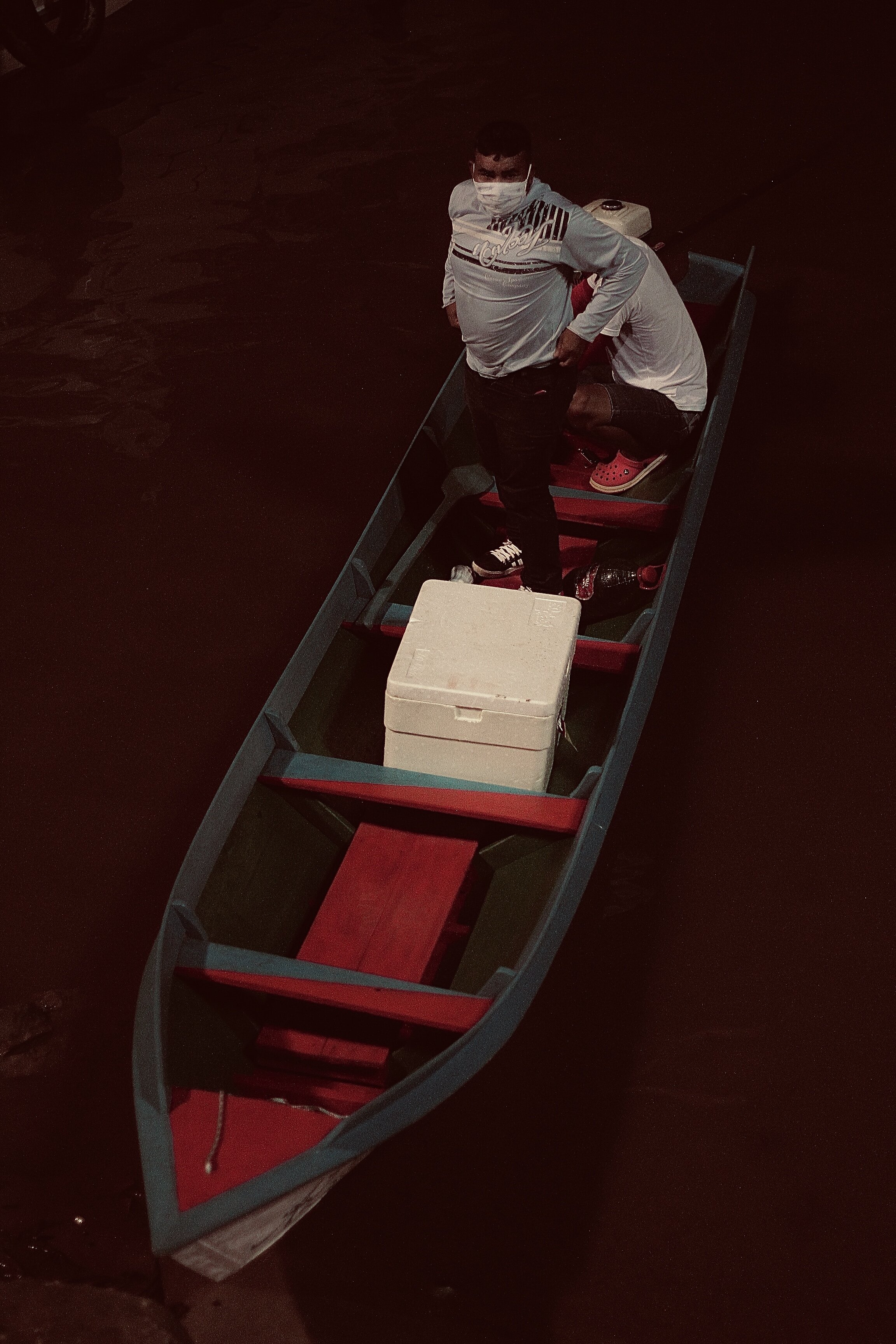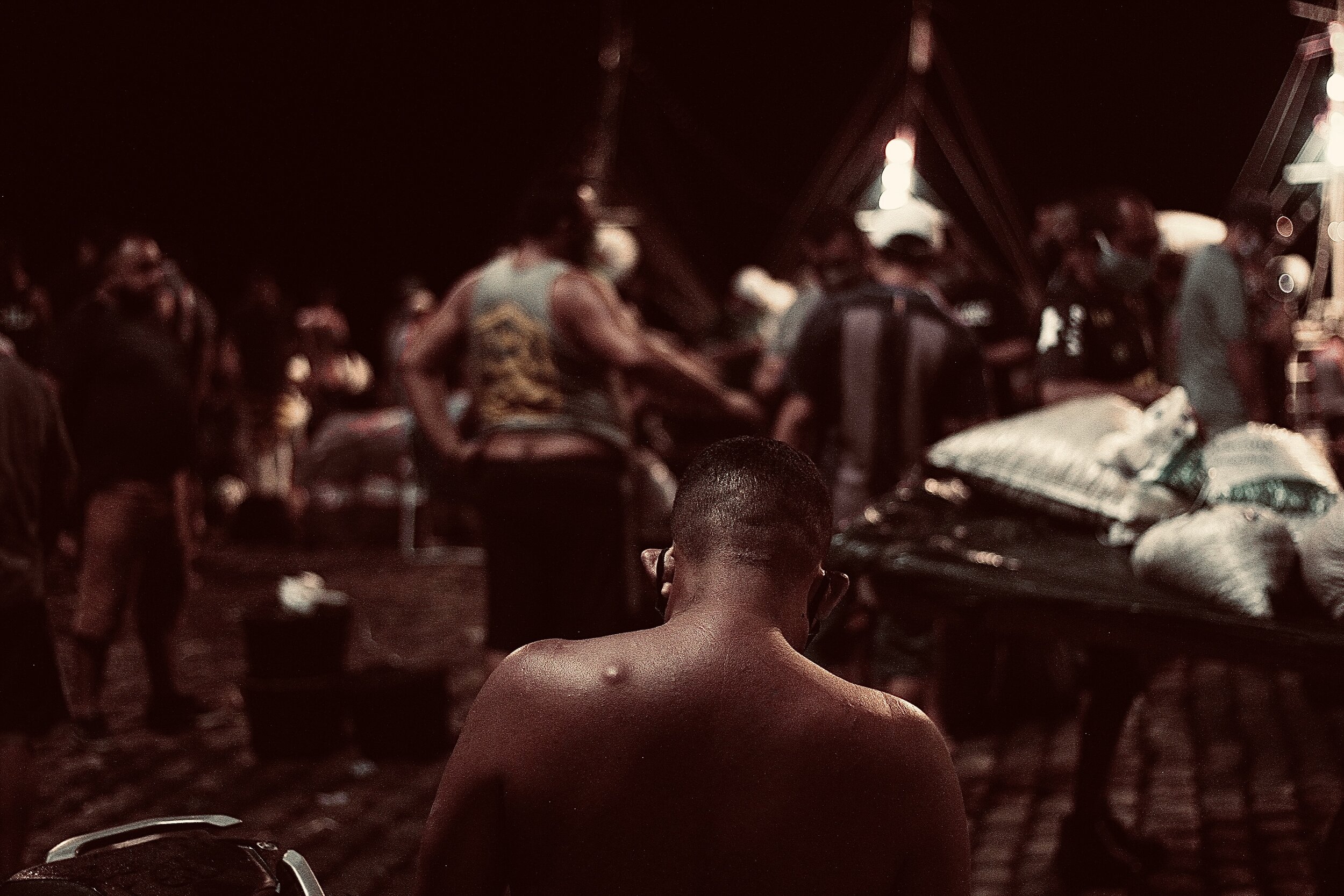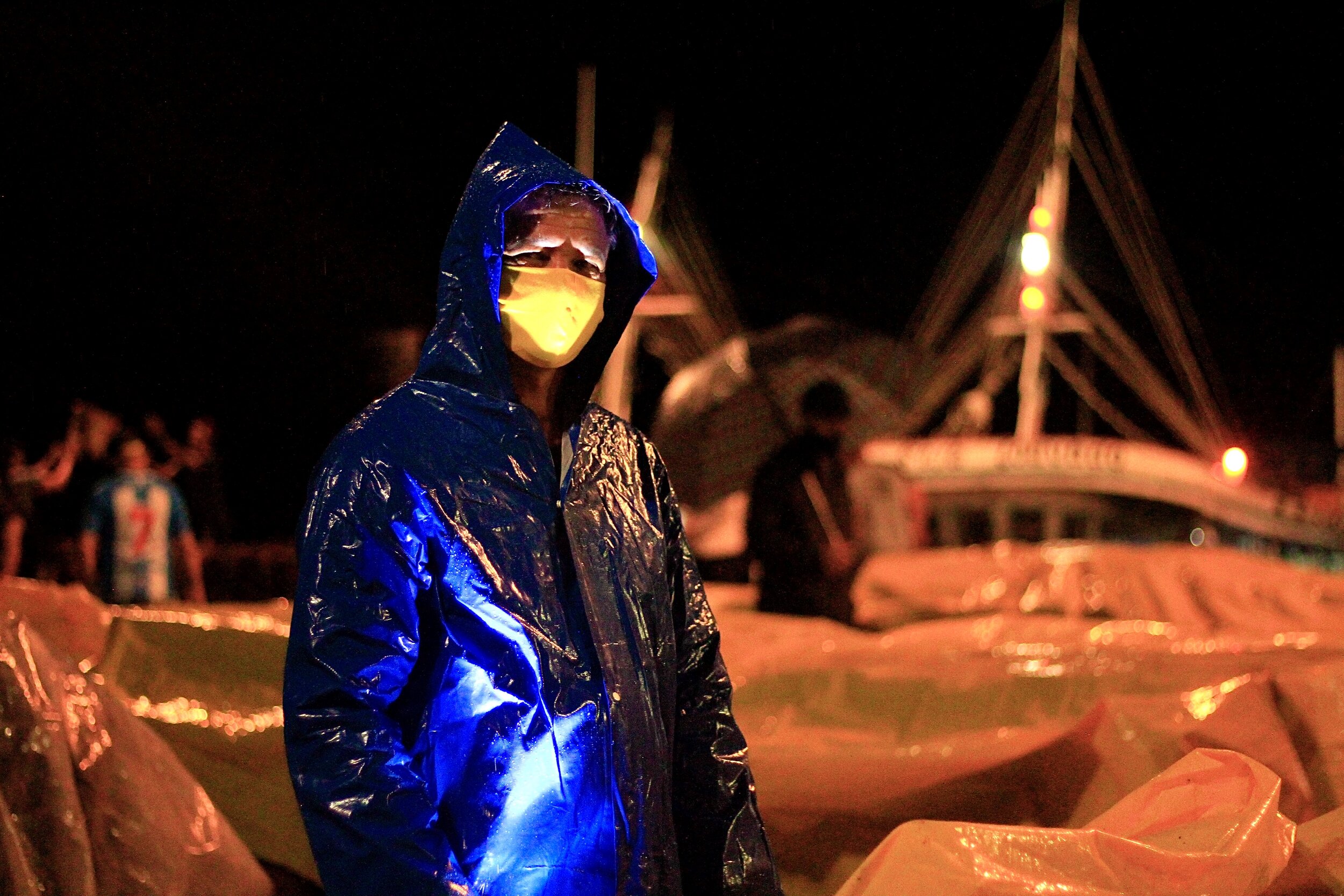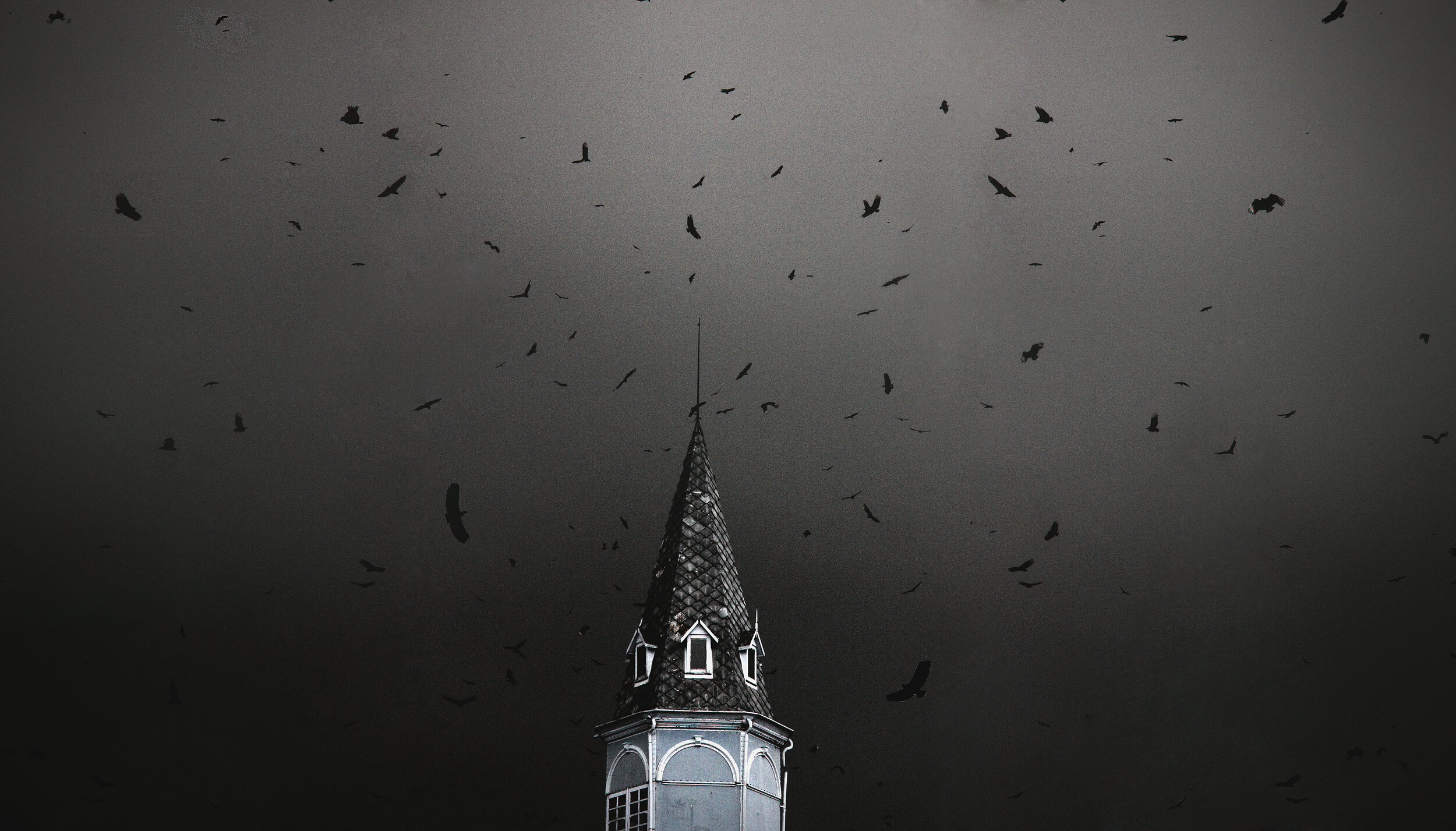A Matter of Identity - interview with Nayara Jinknss
(This interview was originally published in 2020, exclusively in Portuguese).
Nayara Jinknss is one of the new promises in Brazilian photography. A Black, homosexual woman from a small town near Belém, she has made the identity struggle her aesthetic and political banner. She believes in photography as a tool for social change.
Her main project is a long photo essay on Ver-o-Peso. For ten years, she has been photographing life in the traditional municipal market of the capital of Pará. Her subjects are often marginalized people, almost always voiceless. Small traders, porters, street vendors, fish cleaners, homeless people, hairdressers, practitioners of Candomblé, drug traffickers, prostitutes, and transgender people whom she approaches in search of empathy.
Gradually, her work began to attract attention outside the state, and Jinknss became a digital influencer. Today, she has almost 35 thousand followers on Instagram. The quality of her work, the visibility of social networks, and the relevance of the issues she discusses also helped her to be chosen to participate in the reality show Arte na Fotografia, on Arte 1. On July 18th, Nayara was announced as the winner of the program.
At 29, she now wants to "move around the world." She is just waiting for the end of the pandemic. From Ananideua, where she is spending the quarantine with her family, she talked about the difficulties of entering documentary photography outside the big centers and with little money, the Ver-o-Peso project, photography as a tool for education and social change, participating in Arte na Fotografia, and her projects for the future.
Where did your initial interest in photography come from?
Since I was little, I always liked photography, but I was never encouraged to consume or enjoy the arts. We had a small analog camera, a birthday present from my grandmother. My mother used to complain a lot about buying film, and I never appeared in any photos. I was always taking pictures of my friends at school. Then, at seventeen, I suddenly became interested in photography. I needed a degree. Since I always talked a lot and got along with everyone, I grew up with people saying I would study journalism. But I'm a Gemini, and I get bored very quickly. I wanted a course that would please me at various times. And unintentionally, I found the visual arts course. I talked to a friend who was studying it, and I understood that, each semester, there were different things, arts, artistic movements. I got interested and looked for a degree that had photography for a longer period. At the Federal University of Pará (UFPA), it was only one semester. But there was another university, the University of the Amazon (Unama), which offered three semesters of photography. Then I said, "this is it." From the first year on, I never stopped. My grandmother, my mother, my father, and I managed to buy a camera. I’ve done everything: weddings, books, photos for catalogs. Many people said, "Oh, you won't be able to support yourself doing visual arts." But we were never rich at home. So, in my mind, if I could survive off photography in a cool way, it was OK.
What initially attracted you to photography? And what attracts you today?
What attracted me was the power to capture the image, you know? Due to the exercises, the number of times I played with the camera, I could make technically very beautiful images. But after a while, I realized there was something more in the photography that I wanted. When I graduated, at 23 or 24 years old, I went to do a postgraduate course in cinema in Rio de Janeiro. My mother paid for the university, and I found ways to survive. But when I arrived in Rio, I began to be perceived differently, suffering racial violence that I did not experience or feel in Belém because, until then, I did not recognize it as racism. I didn't identify as a Black woman. In Belém, many of us identify with being "moreno." But in reality, being moreno is being a light-skinned Black person. Realizing these issues, I imagined that if I didn't understand the racism I was going through, I probably reproduced it. I was very racist and homophobic, even being homosexual. I didn't see the urgency of talking about various issues. I simply joked, thinking it didn't affect anyone. But it does. Over time, I understood the need to take a stand and talk about these things. I started to approach feminism and read Black female authors.
Did these references change your photography?
When I started photographing, most of my references were white men. Miguel Rio Branco, Sebastião Salgado, João Ripper. João Ripper was the guy who changed my life. Although he is a white, cis man, his photography has impacted me since the first day I came in contact with it. He is still one of my greatest references. This photography with educational power, giving dignity to people, not reinforcing stereotypes, not marginalizing. I began to understand some issues and sought to work on that within my photography.
Are these the themes you seek to photograph nowadays?
My photography deals with all these issues that once kept me away from the job market. The fact that I am Black, lesbian, decentralized. Because I am not from the periphery, I am decentralized. I live in Ananindeua, which is sixteen kilometers from Belém. Thinking about that, I started to see photography with this urgency of being able to talk about it. I know well how they document the Amazon, Belém, how they talk about us, how they photograph us. These are things I no longer want for myself. So, I have been proposing a new perspective. We are much more than flora and fauna. We need to look at ourselves with complexity, because only then do we understand our differences.
You spent over ten years photographing the Ver-o-Peso market. What was your work routine and creative process like in the beginning? And how did it change?
Ver-o-Peso has always been present in my life. My grandmother was a market vendor. My mother used to work in a shoe store there. I have always been at Ver-o-Peso. And I always liked it a lot, I always talked to everyone. It's something I also learned at home. I started photographing Ver-o-Peso when I was eighteen, nineteen years old. Ver-o-Peso is an area where you can't let your guard down. Like any port area, if you let your guard down, you might get robbed. They also built an image of Ver-o-Peso as always being marginalized, because of the "pitiú," which is the smell of fish, or because there are many people who can rob you there. So, in the beginning, I was scared. I would go to photograph at ten and return at lunchtime. Over time, I would stay until almost six o'clock (in Belém, it's almost night). But I could never go at dawn, which is when the boats arrive with everything that comes from the islands and the surroundings of Belém to supply the market. This was very frustrating because I always wanted to be included among the more traditional photographers. I always wanted to be able to go around with them, feel safe, and photograph together. But I felt I didn't fit in. I wanted to raise money to go to Ver-o-Peso at dawn by taxi, and no one supported me.
You didn't have anyone to go with...
Then my family managed to buy a car, and I saw a photo of a guy I don't really get along with at Ver-o-Peso. I said, "You know what? Now I'll go at dawn." Even though today I'm not a big fan of Miguel Rio Branco's work, it was in one of his books that I understood that if he didn't pay to take the photos he took, he had to have a great deal of intimacy with people. I later discovered that he spent some time in Pelourinho to be able to take those images. So I said, "To take the images I want, I'll need to 'live' at Ver-o-Peso." So, I set a goal. "At least three times a week, I'll get there at three in the morning and start photographing only when there's light, at six in the morning."
What did you do until there was light to photograph?
I would chat, jump from place to place. I started experiencing many situations, getting to know everyone. People began to notice me. My routine transformed into this. I would bring photos, add people on Facebook, give them my WhatsApp, send things on Instagram. Because, for me, photography has always been about photographing people I like, with affection. So that they can see themselves. It's a pleasure when they look at the images and find themselves beautiful, want to take them home, show them to their mothers. It stops being just a technical thing to establish a bond. We stop seeing them just as fish cleaners, or just as drug users, homeless people, people in social vulnerability. It's important to make people who were once like me, who were racists or are racists, rethink. Think, for example, about the possibility that a homeless person has love, a passion. I keep thinking about these questions beyond just talking about drugs or showing their pipes. I might show them, but I don't want to reduce them or use photography as a weapon. It's about enabling another perspective, right? Many times, this other perspective needs to come from a viewpoint other than that of a normative, white, cis man. I'm not putting myself on a pedestal. Because I never was. But it's really about encouraging, proposing. Because, after all, in Belém, we don't see ourselves in books and often deny the things here. We only know what a sometimes-whitened culture tells us. We only start valuing what we live, our culture, when we leave Belém. And then, Ver-o-Peso ends up being this "research object" of mine. I'm still going there today.
Have your themes of interest changed? Has your way of approaching subjects changed?
Now that I participated in this TV show, Arte na Fotografia, I realize that I can clearly see a change. I can talk about politics, but also bring a more conceptual photography, something beyond photojournalism, beyond documenting daily life. My discourse is very political, activist. Photography is how I see life. I intend to talk to people. It's also a tool through which I understand myself. Nowadays, I might even change locations. Go to São Joaquim market in Bahia, for example. But I find the same intersections there. The racial issue, gender, sexuality. I keep thinking about how I can approach this, so it’s not just repetitive.
What themes/projects have you been dedicating yourself to?
So that the projects are not just my photographic act, I often dedicate myself to working in schools to ensure no one needs to pay to know what I'm telling you here. I have the big dream of creating a popular photography school. It's also one of Ripper's principles of "well-meaning photography." He has a project in Complexo da Maré, training young people from the periphery to become photographers. My dream is for photography to be a language that everyone can use to express themselves. It's very difficult, in Belém, to find trans women documenting, for example. I, although I have all my intersections, don't know what the experience of a trans woman is like. It's only fair that someone who experiences that reality can document it. They will have more tact. So, what can I do? My power, beyond recording, is in training. Photography is education. Art is an instrument of change and needs to be valued, needs to be extolled. It also needs to be accessible. We need to value ourselves, extol our culture, so that we understand its importance, so that it is not erased.
Can you make a living from documentary photography?
These have been the first few months, in eleven years working with photography, without needing a fixed job. But I also held on to save some money and survive this period. And I have been selling photos. Here in Belém, to be an artist, you need to have another profession. Surviving on this independent photography is almost impossible. Because the State doesn't value artists. I have been doing a curation for Mídia Ninja about women who are documenting in the North region, and I find it very difficult to find them.
What did you seek on "Art in Photography"? What effect did it have on your photography?
I was encouraged by a friend, activist photographer Isa Medeiros. She told me, “sign up for this thing because you're such a blogger. If you don't win the camera, because the prize is a camera, and mine is outdated, at least you will talk about Belém, about the things you see.” So, I thought, OK. I went to win a camera and that's it. Besides that, I knew it was very important to talk about Belém and our struggles. One of the things I mentioned on the show was about Sebastião Salgado in his interview with Pedro Bial. If I see Sebastião Salgado, a great reference in photography, saying that cell phone photography isn't real photography, I will be frustrated. And I don't want that. Because obviously, you will have a technical limitation. But while you can't have access to a camera, try to document in another way, but don't stop. Today, I am part of the Mamana collective, which has other photographers from other regions. We need to create a dialogue, create a network, encourage people through representation to feel confident to continue what they are doing. I talked to many women from the Black movement, with many women in general, to know what needed to be done to make people listen, since I had the privilege of speaking on national television. Because, after all, I'm not the owner of the truth, but I realize that there are commonalities among women here and in the rest of Brazil.
What equipment do you use? And why?
I use a Canon 7D, with a 50mm lens. But I hardly use it anymore because it’s in bad shape. I've had it for eight years. I also use my iPhone, and I make do with what I have.
How have you been during the pandemic?
In my mind, it has always been very clear that social isolation is the most efficient thing we can do if we want to get out of this moment. As much as I really wanted to be out there documenting. Until a moment came when I was already freaking out, and I got a job indication for Getty Images. A documentation job about what was happening here in Belém, without sensationalism, with PPE, everything in order. I was very happy because my work is different from photojournalistic work. If you look at my photos and the photos circulating of the pandemic, it's a bit different. The color, the proximity, everything changes. But I kept thinking about how I could document the pandemic without the hospitals, the graves, that sad part. I remember a workshop with João Ripper. He talked a lot about the big foreign agencies that send photographers to document the epic part of the war. But while the war is going on, other things happen. So, besides that, what else can we document? I went to document the things that affected me and that I believed affected people here in Belém. I went to Ver-o-Peso to try to understand how they were understanding the lockdown. And it was another experience going back with all that, with PPE, meeting a lot of people again. Some people didn't even understand why people were wearing masks. At that moment, I had to stop photographing to simply guide them. Because if there is no exchange, my work is not happening. And I have been surviving like this, trying to do some projects within the collective, with some friends. I believe that, once this difficult time passes, I will get back to moving around the world. I feel that my body is pulling me out of Belém.
